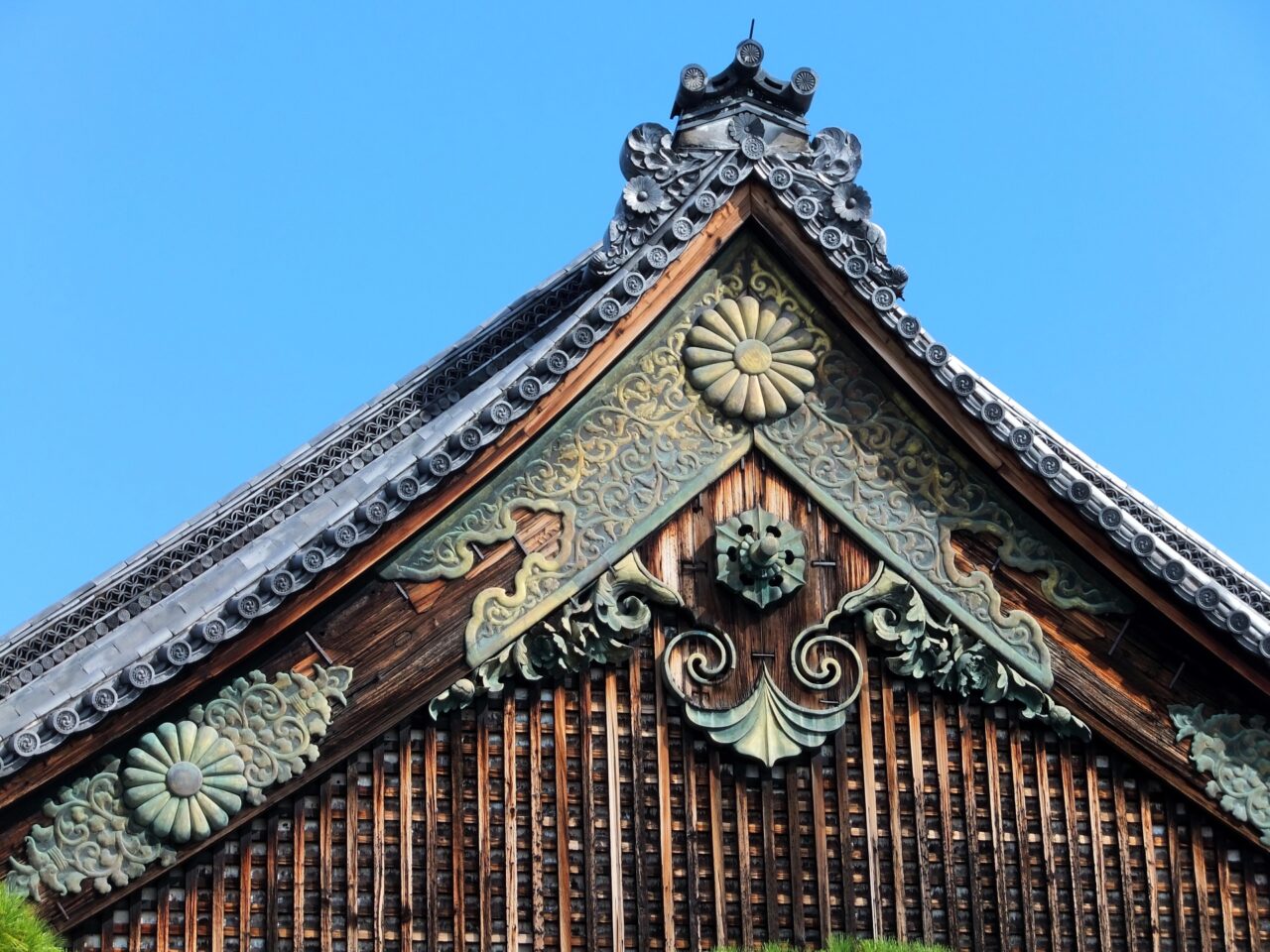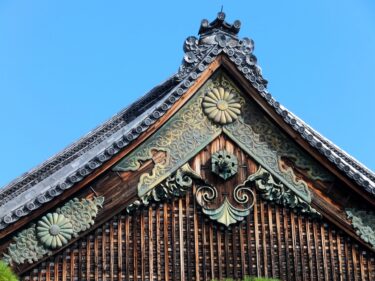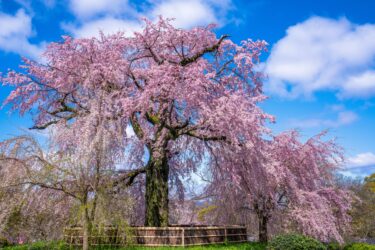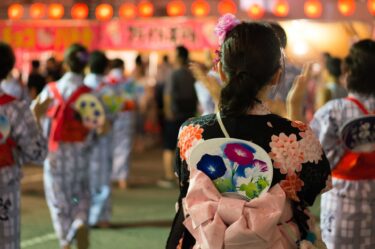Kyoto is often called Japan’s cultural capital, and it’s easy to see why. With more than a thousand years as the seat of emperors, and home of monks, aristocrats, and artisans, the city has developed a distinct architectural identity. Unlike many other Japanese cities, Kyoto escaped large-scale destruction during World War II, preserving a wide range of structures that reflect its long and complex history. Walking across the city, you’ll find everything from wooden townhouses and ancient temples to contemporary museums and public buildings. Architecture in Kyoto is not just about aesthetics: it tells stories about religion, social order, craftsmanship, and adaptation through time. An exhaustive list could fill books, but here, we’ve highlighted a few of Kyoto’s stand-out architectural structures to check out when you visit.
Kyoto’s Architectural Timeline: A Brief Overview
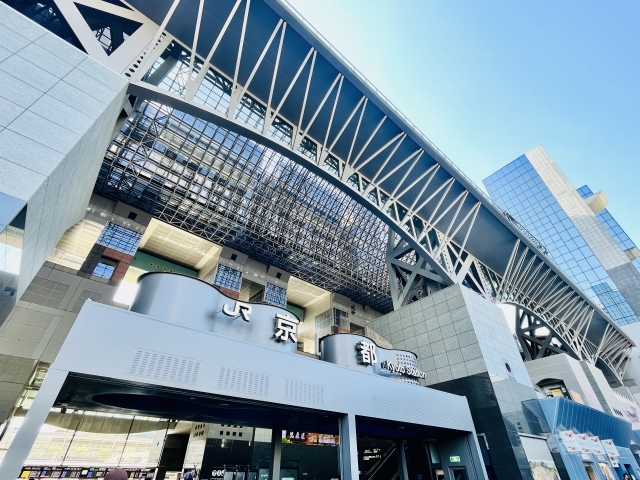
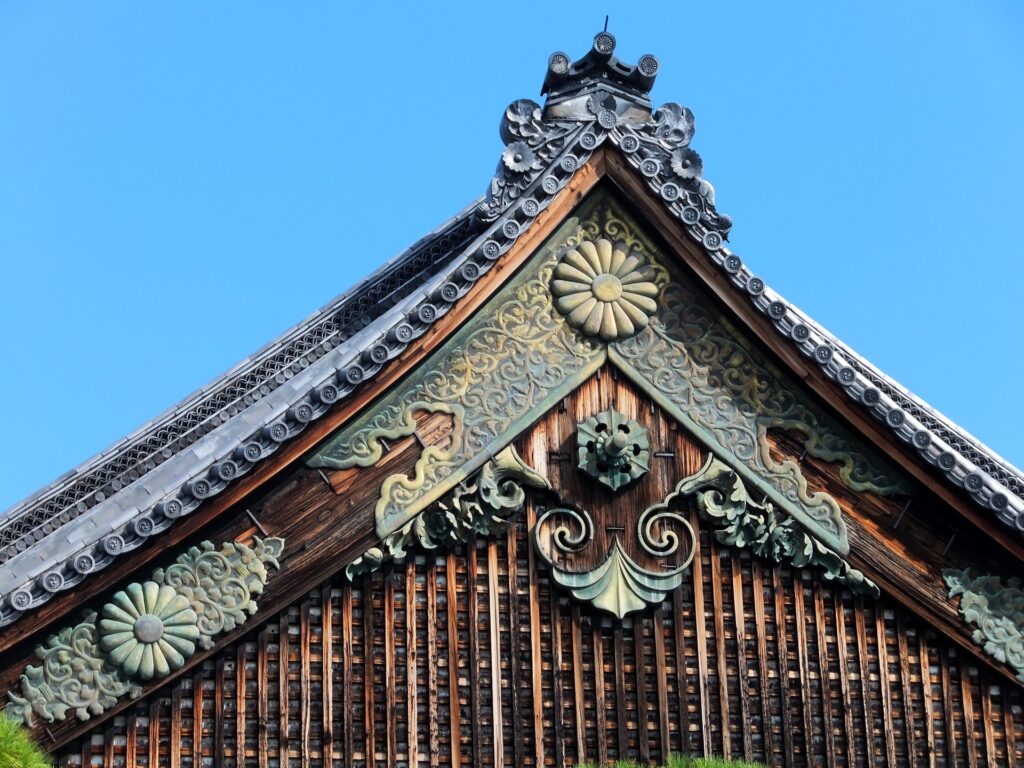
Kyoto’s urban and architectural history spans more than 1,200 years. Founded in 794 as Heian-kyo, the city and then-capital was modeled on the Chinese Tang capital of Chang’an, with a grid layout and palace at its center. Over the centuries, Kyoto developed new architectural forms, influenced by Zen Buddhism, samurai culture, tea ceremony practices, and later, Western modernization.
Some of the most famous buildings in Kyoto date from the Muromachi (1336–1573) and Edo (1603–1867) periods, including elegant temples and merchant homes. The Meiji period (1868–1912) brought more Western-style architecture, which you can still see in some stately structures in the city center. Despite modern developments, Kyoto continues to balance innovation with preservation.
Religious Architecture: Temples and Shrines
Buddhist Temples
Kyoto is home to thousands of temples, many of which are architectural landmarks. It’s difficult to select only a few, as many are architecturally noteworthy, but the following are a selection of temples with some of the most famous structures in Kyoto.

Kinkaku-ji (The Golden Pavilion) is perhaps Kyoto’s most photographed temple. Its top two floors are covered in gold leaf, reflecting beautifully in the pond below. Fascinatingly, each level of the temple’s most iconic building reflects a different architectural style: the first floor is that of Heian period (794-1185) mansions, in the shinden-zukuri style; the second floor is rendered in the style of buke-zukuri, seen in samurai homes, and the third floor is constructed in zenshu-butsuden-zukuri style, which is associated with Chinese Zen temples. The surrounding gardens are exemplary of Muromachi period (1336-1573) garden design.
Ginkaku-ji (The Silver Pavilion) was never actually covered in silver, despite its name, but its understated design and dry sand garden are hallmarks of Zen-inspired simplicity. Would you believe that it was originally built as the retirement villa of Ashikaga Yoshimasa in the 15th century? Converted into a temple just a few decades later, the buildings of Ginkaku-ji Temple are constructed largely from two different styles: shinden-zukuri (often called “palace” style) and shoin-zukuri (literally, study room style), which includes sub-divided smaller rooms. Like Kinkaku-ji Temple, Ginkaku-ji also features a beautiful strolling garden with a pond.
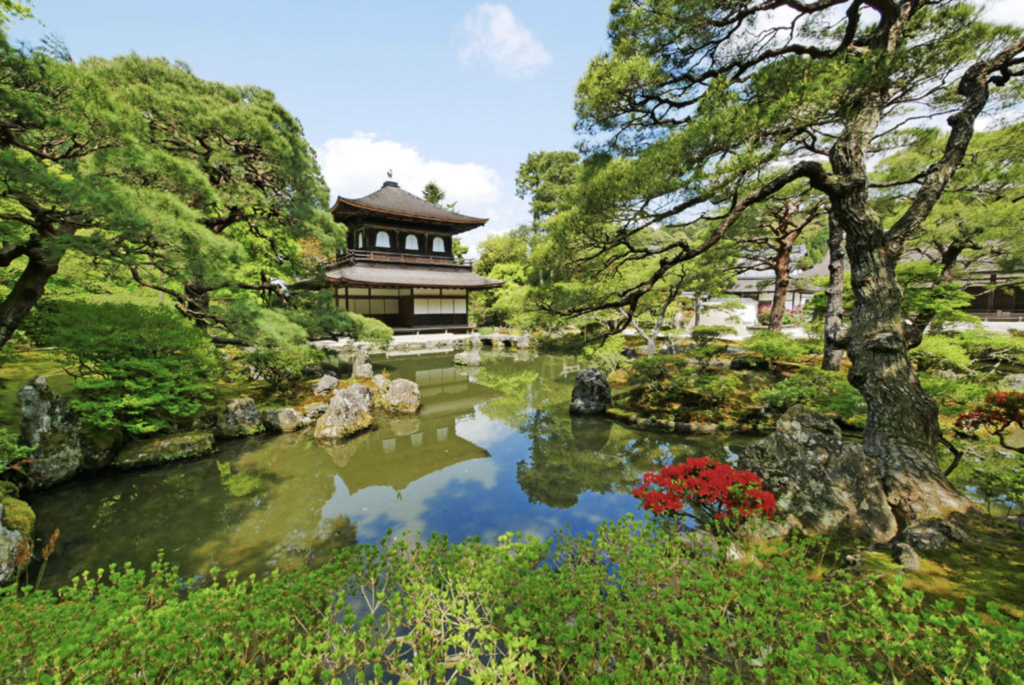
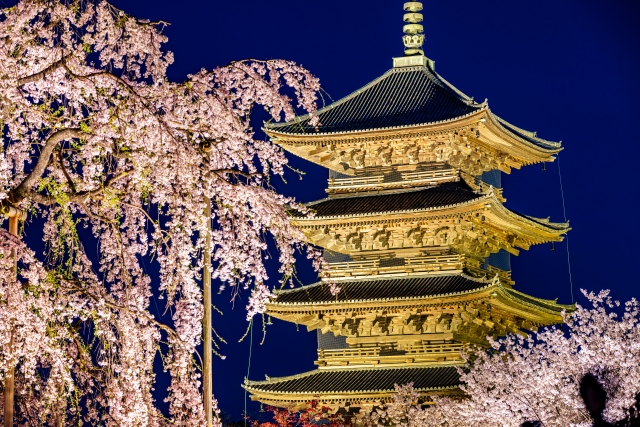
To-ji Temple is an ancient temple home to Japan’s tallest wooden pagoda, standing at 54.8 meters. This exquisitely intricate structure was originally constructed in 826, but was unfortunately destroyed by fire four times since then. The pagoda that stands in the temple precincts now was reconstructed in 1643, and has since been designated a National Treasure. The towering pagoda is certainly the main attraction here, but To-ji’s other buildings are not to be missed, either.
Shinto Shrines
Like the city’s temples, Kyoto Shinto shrines come in a variety of architectural styles. Some are brightly painted in shades of vermillion and white, and others are constructed of a more naturalistic unpainted woof. As with temples, Kyoto is home to many hundreds of shrines, and the following are only a selection that standout for their architecture:
Shimogamo Shrine is built in the nagare-zukuri style common to many Shinto structures. This style features a curved roof that extends out over the entrance to protect visitors from the elements. The shrine buildings are painted a striking vermilion red, standing out beautifully against the surrounding Tadasu no Mori forest. Key structures like the main hall (honden) and worship hall (haiden) are designated National Treasures.
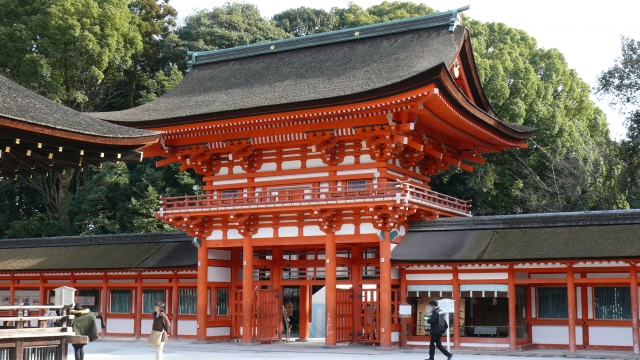
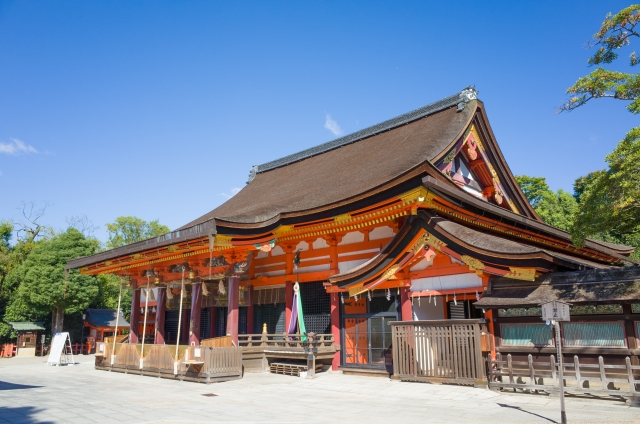
Yasaka Shrine is known for its bright vermillion-and-white buildings and distinctive two-story main gate, which marks the entrance from Gion. The main hall combines the traditional main hall (honden) and worship hall (haiden) under one large, sloping roof—a feature of the Gion-zukuri style, unique to this shrine.
Fushimi Inari Taisha is instantly recognizable for its hundreds of vermilion torii gates that form long tunnels up the slopes of Mount Inari. At the base of the mountain, though, you’ll find the shrine’s romon main gate, a grand, two-storied white and vermillion structure with a dramatically swooping hip-and-gable roof. Fushimi Inari’s honden, or main hall, follows the traditional nagare-zukuri style, with its asymmetrical roof that extends more deeply over the front entrance. Of course, its the vivid colors and rhythmic repetition of the torii gates beyond these two structures that the shrine is most known for.
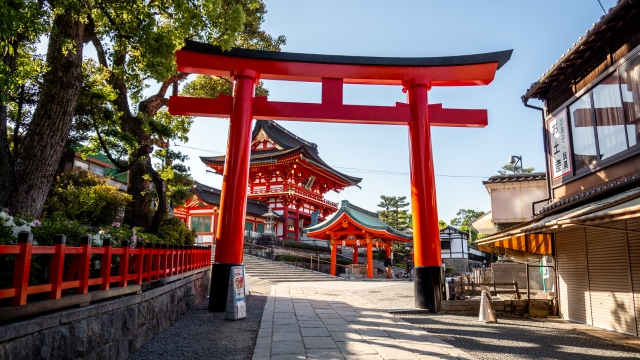
Traditional Residential Architecture
Machiya Townhouses
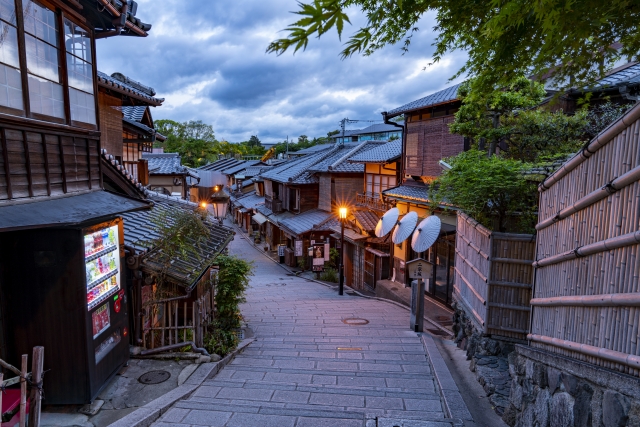
Machiya are traditional Kyoto townhouses built from wood, with tiled roofs, narrow facades, and latticework known as koshi. These structures were the homes of merchants and craftsmen, combining living quarters in the rear with workspaces or shops in the front.
You can find preserved machiya today in areas like Gion, Nishijin, and Sannenzaka/Ninenzaka. Many have been converted into cafes, galleries, and guesthouses, so you can even find opportunities to spend the night in a Kyoto machiya! For more on these wonderful structures, Why Kyoto’s Machiya Are Worth Exploring.
Castles and Aristocratic Architecture
Nijo Castle
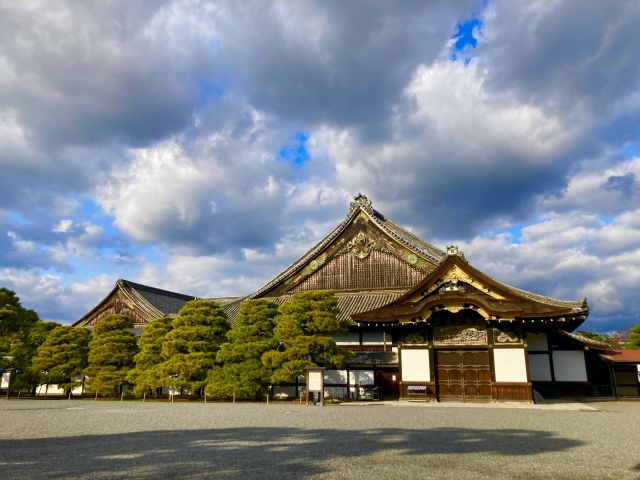
Built in the early 1600s for the Tokugawa shogunate, Nijo Castle is a moat-encircled castle with some exquisitely beautiful architectural features. The interior of Ninomaru Palace within the complex features painted sliding doors (fusuma) by artists of the Kano school. and clever defensive features, like “nightingale floors” that squeak when stepped on, alerting residents to any intruders.
Imperial Palaces and Villas
Kyoto Imperial Palace, located in Kyoto Gyoen National Garden, showcases the refined courtly style of the Heian period. Though the current structures are largely reconstructions from the 19th century, they follow traditional Heian-style palace architecture, with simple yet elegant wooden buildings arranged around open courtyards and gravel paths.
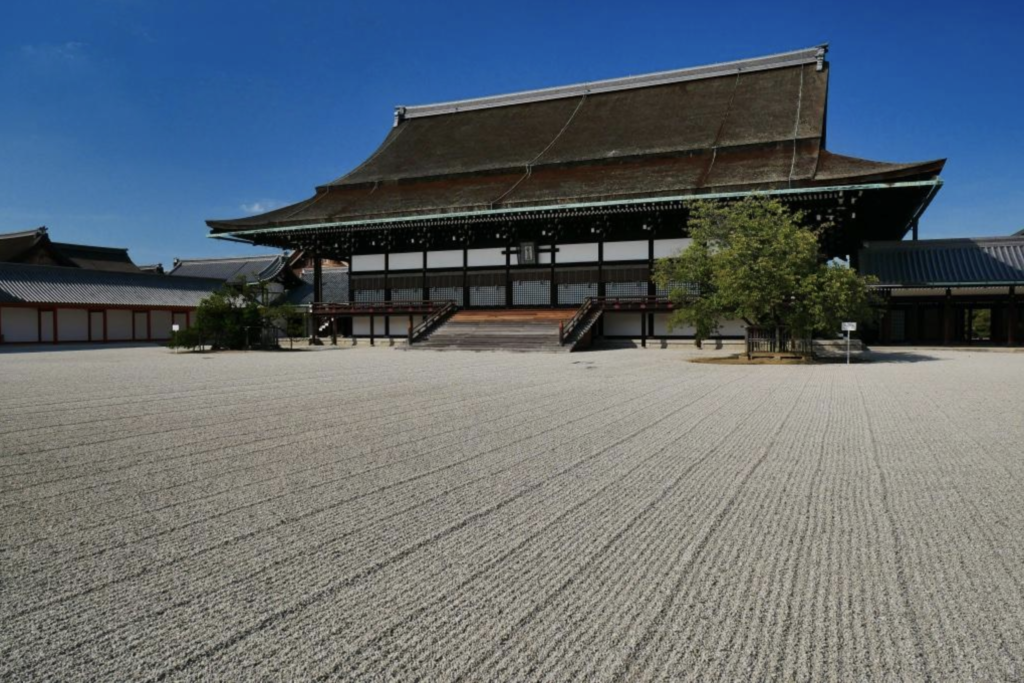
Right next door, the Kyoto State Guest House offers a contemporary interpretation of traditional Japanese design. Completed in 2005, it was built to host foreign dignitaries and blends modern engineering with classical Japanese elements. Tours of the guest house are available, and worth taking to learn about the craftsmanship that was put into the interior in particular.
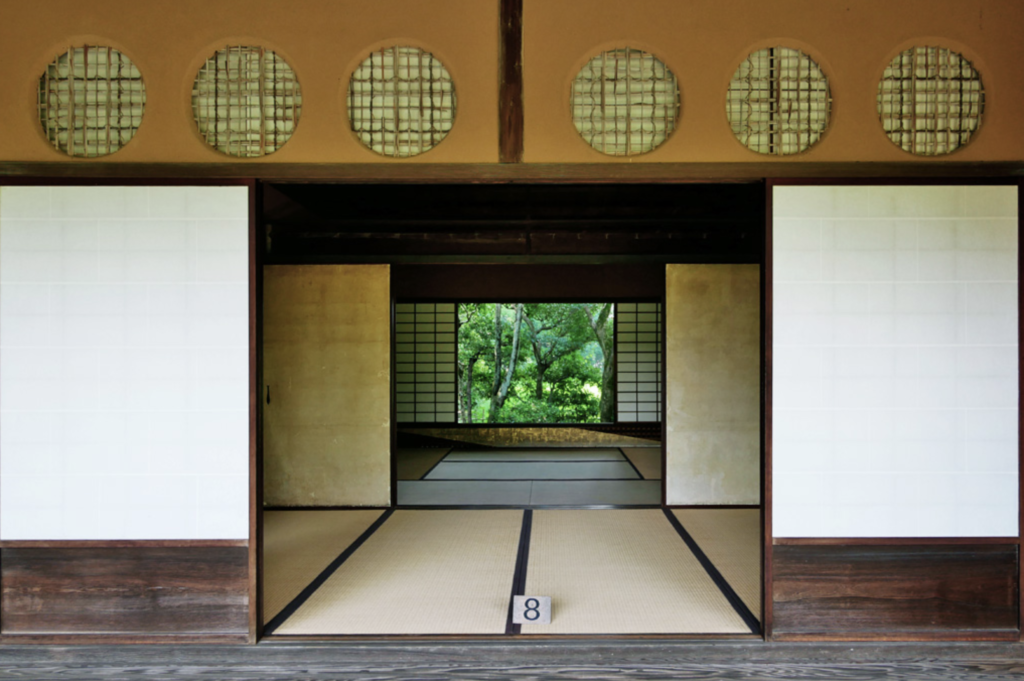
Katsura Imperial Villa is often considered a masterpiece of traditional Japanese residential architecture. Constructed in the 17th century as a retreat for the Imperial family, its architecture emphasizes natural materials, asymmetrical design, and carefully framed views of the surrounding gardens. The villa’s pavilions and teahouses are connected by covered walkways and subtly blend into the landscape.
These sites require reservations to visit but are well worth the effort if you’re interested in architectural design.
Modern and Contemporary Architecture in Kyoto
Despite its reputation for thousand year old traditions, Kyoto is not stuck in the past. The city has embraced contemporary design, too, even while respecting its traditional landscape, and there are a number of interesting 20th century – and even more modern structures throughout the city that are worth a look.
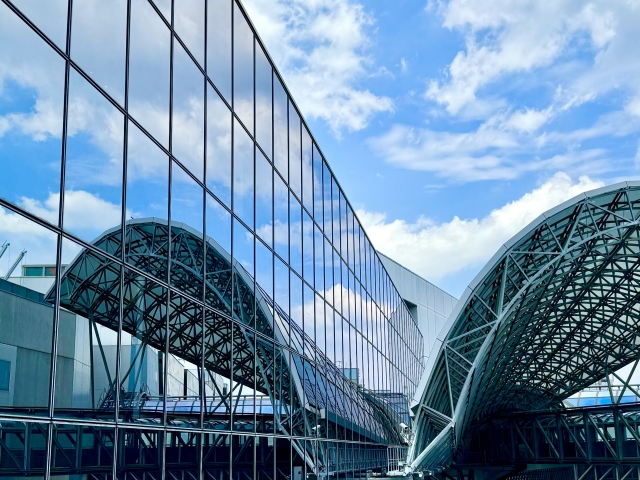
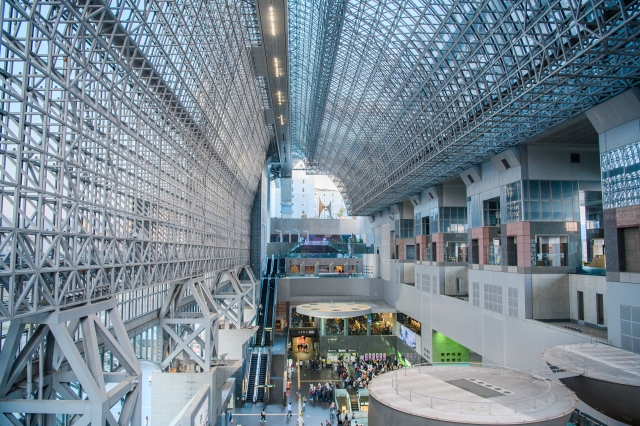
Kyoto Station, designed by Hiroshi Hara, is a vast steel and glass structure that surprises many first-time visitors with the unique arches of its high ceiling. Inside the station, you’ll find shopping malls, hotels, and, if you ride the series of escalators to the rooftop, panoramic views of the city.
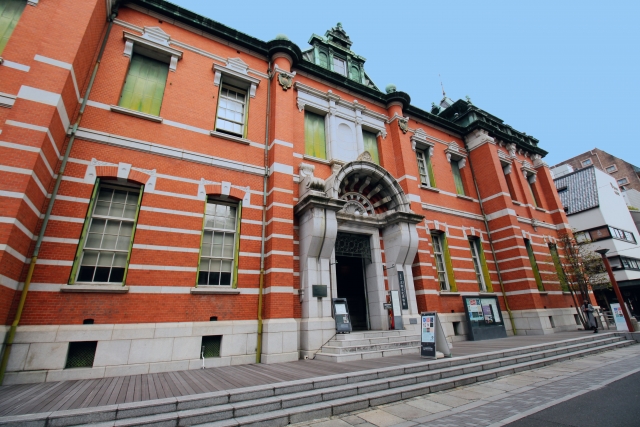
The Museum of Kyoto is not only a museum, but a cherished piece of Meiji era (1868-1912) architecture. Its annex, originally the Kyoto branch of the Bank of Japan, was designed by renowned architect Tatsuno Kingo and his apprentice Uheiji Nagano. This red-brick building, completed in 1906, is a prime example of early Western-style architecture in Japan and has been designated an Important Cultural Property. The main building, opened in 1988, has contemporary exhibition spaces that complement the historic annex. The building is located in Kyoto’s bustling Karasuma area, so if you’re strolling around downtown, you might just come across it on your own.
Architect Tadao Ando has contributed several works in and around Kyoto, known for their minimalist concrete forms and attention to light and space. One easily accessible example is the Garden of Fine Arts, a museum featuring tiled versions of artworks by the Kyoto Botanical Gardens. The flowing concrete shapes of the building design serve to frame the artwork and how it’s viewed from multiple levels and angles.
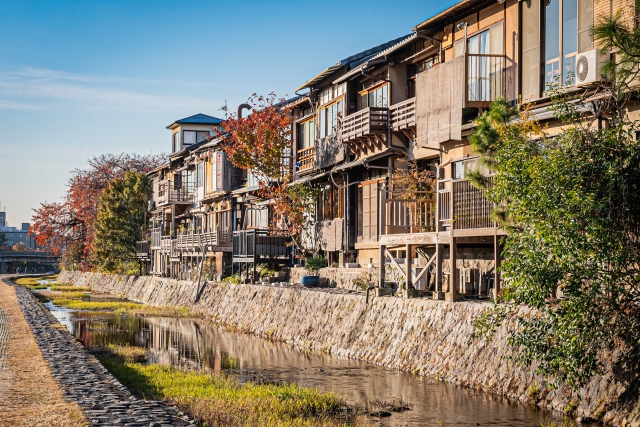
Of course, if you want to engage with Kyoto’s architecture in a more immersive way, you might want to sign up for an architectural tour around a part or parts of the city. Even some of the buildings in the city’s central districts have fascinating stories that a guide can help reveal. You also might want to consider spending the night in a machiya. As inns, machiya are typically restored with modern comforts, but offer so much in atmospheric appeal.
However you experience it, Kyoto’s architecture tells the story of a city shaped by centuries of cultural, spiritual, and aesthetic ideals. Its buildings, both old and new, reveal how history and daily life continue to intertwine in this uniquely layered city.

